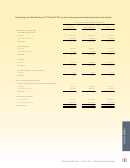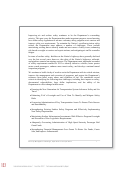Performance And Accountability Report - Fiscal Year 2013 - Federal Aviation Administration - U.s. Department Of Transportation Page 23
ADVERTISEMENT
 1
1  2
2  3
3  4
4  5
5  6
6  7
7  8
8  9
9  10
10  11
11  12
12  13
13  14
14  15
15  16
16  17
17  18
18  19
19  20
20  21
21  22
22  23
23  24
24  25
25  26
26  27
27  28
28  29
29  30
30  31
31  32
32  33
33  34
34  35
35  36
36  37
37  38
38  39
39  40
40  41
41  42
42  43
43  44
44  45
45  46
46  47
47  48
48  49
49  50
50  51
51  52
52  53
53  54
54  55
55  56
56  57
57  58
58  59
59  60
60  61
61  62
62  63
63  64
64  65
65  66
66  67
67  68
68  69
69  70
70  71
71  72
72  73
73  74
74  75
75  76
76  77
77  78
78  79
79  80
80  81
81  82
82  83
83  84
84  85
85  86
86  87
87  88
88  89
89  90
90  91
91  92
92  93
93  94
94  95
95  96
96  97
97  98
98  99
99  100
100  101
101  102
102  103
103  104
104  105
105  106
106  107
107  108
108  109
109  110
110  111
111  112
112  113
113  114
114  115
115  116
116  117
117  118
118  119
119  120
120  121
121  122
122  123
123  124
124  125
125  126
126  127
127  128
128  129
129  130
130  131
131  132
132  133
133  134
134  135
135  136
136  137
137  138
138  139
139  140
140  141
141  142
142  143
143  144
144  145
145  146
146  147
147  148
148  149
149  150
150 sources across the industry and is integrated into the Commercial
The Department of Transportation (DOT) requires that U.S.
Aviation Safety Team (CAST) process, which uses a data-driven
airlines and foreign air carriers flying into the U.S. allow
strategy to reduce the commercial aviation fatality risk in the
passengers to use portable oxygen concentrators approved
United States and promote safety initiatives throughout the
by the FAA during all phases of a flight if the unit displays a
world. CAST’s work, along with new aircraft, regulations, and
manufacturer’s label that indicates it meets FAA requirements
other activities, reduced the fatality risk for commercial aviation
for portable medical electronic devices. Moreover, the DOT
in our country by 83 percent from 1998 to 2008.
strongly encourages airlines to voluntarily allow the in-flight
use of oxygen concentrators even if they are not labeled as
Seven of CAST’s 76 safety enhancements have been derived
FAA-approved because they pose no safety danger.
from forward-looking data analysis in ASIAS. Additionally,
ASIAS stays connected to CAST’s safety enhancements to track
Passengers must ensure that the unit is in good working order
the effectiveness of those interventions. The databases used
and must be able to respond to the unit’s warning alarms. They
to identify trends include Flight Operations Quality Assurance
must protect extra batteries in carry-on baggage from short
(FOQA) programs, the Aviation Safety Action Partnership (ASAP),
circuits and physical damage. The unit must be properly stowed
the Air Traffic Safety Action Program (ATSAP), FAA surveillance
when not in use. Carriers also must allow passengers to operate
data, and many others.
these FAA-approved concentrators while moving about the cabin
whenever the captain turns off the “Fasten Seat Belt” sign.
The agreement outlines the procedures, guidelines, and roles
and responsibilities to be used by the ASIAS Executive Board to
Alternative Aviation Fuels Partnership
address specific written NTSB requests for ASIAS information.
with Spain
The agreement does not allow any of the parties to use aggregate
FOQA, ASAP, ATSAP or other non-publicly available data to
While we maintain the largest airspace in the world, we cannot
measure individual performance or safety.
be fully successful without working hand-in-hand with our
foreign counterparts. The growth in international traffic makes
The NTSB will initiate written requests for ASIAS information
ongoing collaboration with our foreign partners essential. Our
related to aircraft accidents involving U.S. air carriers that occur
agency continues to work closely with other countries and
in the U.S. and address safety issues that both the NTSB and
regions as we all develop new technologies, share ideas, and
the ASIAS board determine are significant and non-routine
harmonize programs.
or reoccurring. The NTSB will not publicly disclose ASIAS
information it receives via the process unless the ASIAS
In February of 2013, the FAA and the Spanish Aviation
Executive Board agrees.
Safety and Security Agency (AESA) signed a Declaration
of Cooperation to promote the development and use of
The NTSB will share with ASIAS its archived air carrier accident
sustainable alternative aviation fuels in the U.S. and Spain.
and incident flight data recorder information related to a request.
The declaration calls for the United States and Spain to
exchange ideas, information, skills, and techniques, and to
Approval of Additional Oxygen Concentrator
collaborate on problems and projects of mutual interest in the
Models
development and use of sustainable alternative aviation fuels.
Early in the fiscal year, the FAA approved seven additional
The specific areas of cooperation include exchanging information
portable oxygen concentrator models for use aboard airplanes,
about research results, publications, funded research, and
bringing the total number of approved units to 21. This is good
development activities. The parties will also share best practices
news for passengers who may need to use medical oxygen.
in alternative jet fuel conversion research, development, and
deployment. The declaration also enables the FAA’s Office of
Portable oxygen concentrators are small, portable devices that
Environment and Energy and the AESA to conduct research
separate oxygen from nitrogen and other gases in the air and
leading to reductions in the cost of producing alternative
provide oxygen to users at greater than 90 percent concentration.
aviation fuels.
They do not use compressed or liquid oxygen, which the
government classifies as hazardous materials.
21
|
|
Federal Aviation Administration
Fiscal Year 2013
Performance and Accountability Report
ADVERTISEMENT
0 votes
Related Articles
Related forms
Related Categories
Parent category: Business









